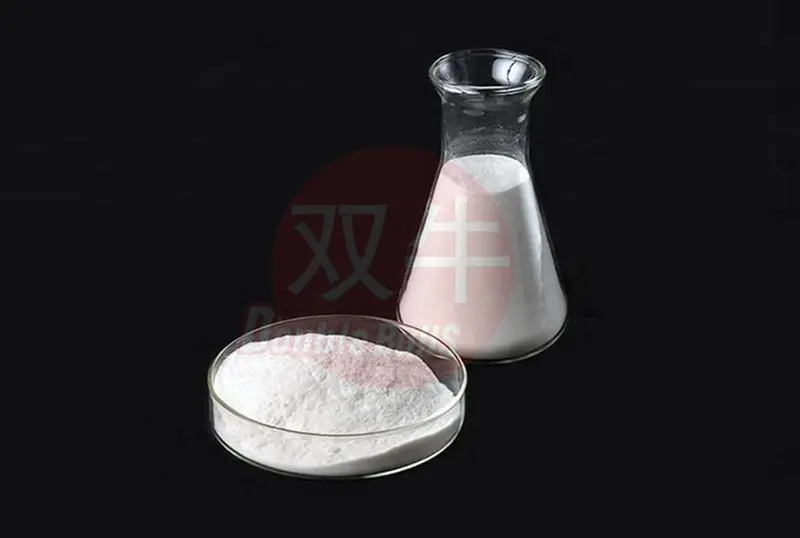cellulose etherDuring the coating process of decorative panels such as artificial boards, solid wood boards, and composite boards (such as primer, topcoat, and putty layer coating), by regulating the rheological properties, interfacial behavior, and drying rate of the coating system, the generation of bubbles can be effectively reduced. The specific functions and mechanisms are as follows:
1、 The core mechanism for reducing bubble generation: controlling bubble formation and promoting bubble escape
The generation of bubbles during the coating process mainly comes from two stages:
Mechanical introduction of bubbles: such as during brushing, roller coating, and spraying, air is drawn into the coating system;
Chemical/physical factors causing retention of bubbles: Abnormal viscosity, imbalanced surface tension, or rapid drying of the coating result in bubbles being unable to escape in a timely manner and being trapped in the coating.
Cellulose ether can be addressed through the following targeted methods:
2、 The role and mechanism of controlling bubble formation
Adjust system viscosity to reduce air entrainment efficiency
cellulose etherMolecular chains form hydrogen bonds with water molecules through hydroxyl groups, creating a three-dimensional network structure that allows coating liquids (such as putty and primer) to maintain moderate viscosity under medium to high shear forces (brushing/stirring forces during construction):
If the viscosity is too low and the fluidity of the coating liquid is too strong, it is easy to carry a large amount of air and form bubbles during construction;
Cellulose ether maintains the construction viscosity of the coating solution (at a rotational viscometer of 60rpm) at 1000-5000 mPa · s (depending on the coating type) by controlling the degree of polymerization (molecular weight), ensuring smooth coating and reducing the amount of air trapped through the "damping effect" of the viscous system.
For example, after adding 0.3% HEC to the primer of solid wood panels, the viscosity increased from 500 mPa · s to 2000 mPa · s, and the amount of bubbles generated during spraying decreased by 40% to 60%.
Reduce surface tension and decrease gas-liquid interface stability
The stability of bubbles depends on the surface tension at the gas-liquid interface: when the surface tension is too high, the bubble film (liquid layer) has strong toughness and is not easily broken. The hydrophilic groups (such as - OH, - OCH ₂ CH ₂ OH) in the cellulose ether molecular chain can be directionally distributed at the gas-liquid interface:
Reduce the surface tension of the coating solution (from 72 mN/m in pure water solution to 45-60 mN/m) and weaken the stability of the bubble film;
At the same time, the adsorption of molecular chains at the interface can break the uniformity of the bubble film, making it easier for small bubbles to merge into larger bubbles (making it easier to escape).
3、 The role and mechanism of promoting the escape of bubbles
Optimize low shear viscosity to provide a channel for bubbles to float up
After construction, the coating liquid is in a low shear state (static leveling stage), and cellulose ether is used to regulate the low shear viscosity (such as at 3 rpm on a rotational viscometer) to avoid hindering the escape of bubbles due to high viscosity:
If the low shear viscosity is too high (such as more than 10000 mPa ・ s), the coating liquid is in the form of "gel", and the bubbles cannot float due to the resistance of viscous medium, so they remain to form films;
Cellulose ether (such as MC) is designed with a moderate degree of substitution (1.5-2.0) to control the low shear viscosity at 3000-8000 mPa · s, ensuring that the coating liquid does not flow (especially for facade coating) and providing sufficient flow channels for bubbles to float to the surface before drying (usually within 30 minutes).
Delay drying rate and prolong bubble escape time
If the coating liquid dries too quickly (such as in a high-temperature environment), the surface will first solidify to form a "hard film", and the internal bubbles will be sealed and unable to escape. The hygroscopicity and hydrophilicity of cellulose ether can:
Combining with water in the coating solution to slow down the evaporation rate of water (reducing water volatility through hydrogen bonding);
Extend the "open time" of the wet film (from 30 minutes to 1-2 hours) to provide sufficient time for bubbles to escape.
Improve the wettability between the coating solution and the surface of the board, and reduce interface bubbles
Decorative boards (such as density boards and plywood) may have small pores or hydrophobic areas on their surfaces (such as wood grease), and if the coating liquid has poor wetting properties, it is easy to form "air pockets" (bubbles) at the interface.cellulose ether:
Its hydrophilic group can enhance the affinity of the coating solution to the surface of the board, reduce the contact angle (from 80 ° to 40 °~60 °), make the coating solution more permeable and fill the pores, and reduce interface air retention;
Forming hydrogen bonds with hydroxyl groups on the surface of the board (such as - OH in wood cellulose) further enhances interfacial adhesion and avoids bubble aggregation at the interface.
summary
Cellulose ether reduces bubbles in decorative board coating through a triple mechanism of "viscosity control, interface adjustment, and extended drying"
Regulating viscosity (preventing entanglement under medium and high shear, promoting escape under low shear);
Optimize surface tension and wettability, reduce bubble stability and interface retention;
Delay drying to buy time for bubbles to escape.
The synergistic use of it with defoamers can further enhance the effect, ensure a smooth coating without pinholes, and improve the appearance quality and durability of decorative panels.


TEL:+86 (0311) 8444 9786
Email:sales@double-bulls.com
Email:Export@double-bulls.com
Address:No.9 Weisi Road, Jinzhou City Eco-nomic Development Zone, Shijiazhuang City, Hebei Province.

Website

Brochure

Video